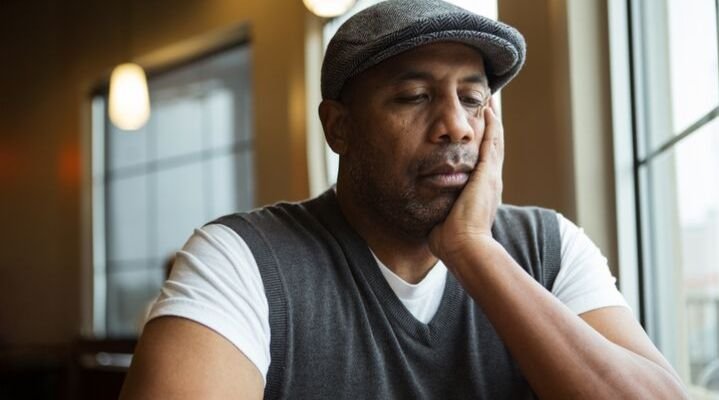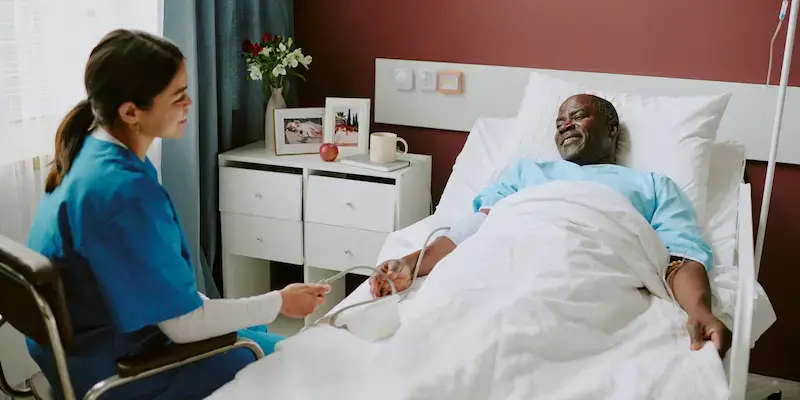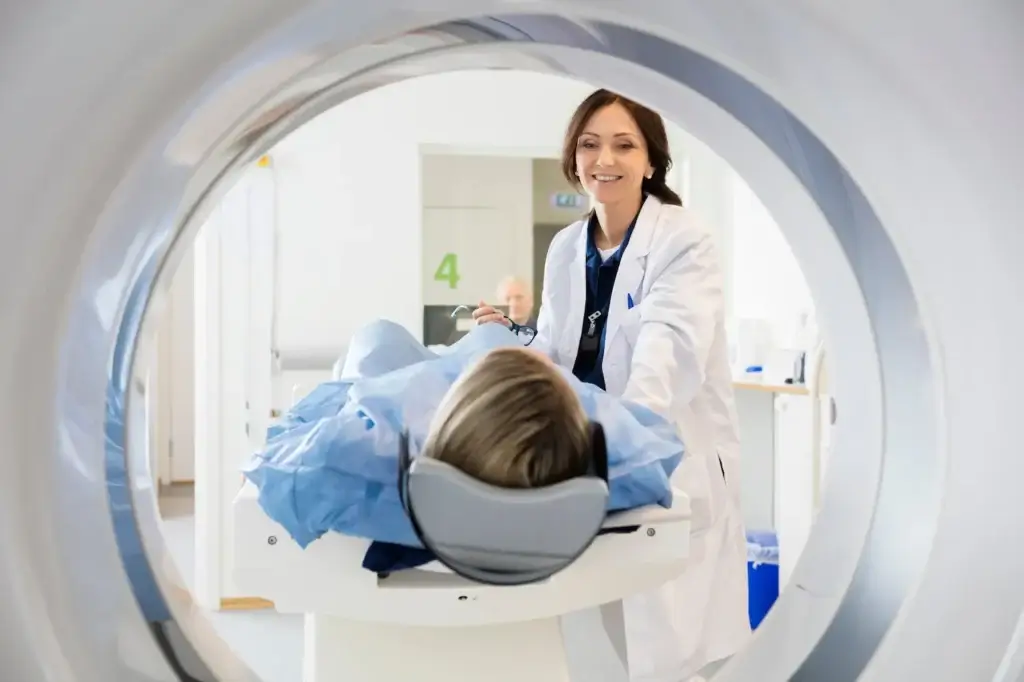Health Hub
Prostate cancer treatment: what are the options?
Checked for accuracy by Professor Caroline Moore

A diagnosis of prostate cancer can be frightening and overwhelming. There are many treatment options and while this might feel bewildering, the wide range of options represents a chance to choose the right one, along with your medical team, to successfully treat or manage your cancer.
In this article, King Edward VII’s Hospital consultant urologist Professor Caroline Moore has helped put together this comprehensive guide to the different prostate cancer treatment options available. Read on to learn more about each option, when they might be suitable and how you can expect them to affect you.
Why are there so many treatments for prostate cancer?
Cancer that is contained within the prostate can be treated in lots of different ways, and can also be monitored closely without treatment, in some men.
Prostate cancer is often a slow developing cancer that may not display any symptoms for many years. It’s the most common cancer among British men.
The symptoms which men might be worried about include:
- Passing urine more frequently than normal, especially during the night
- A more urgent need to pass urine
- Difficulty in starting to pass urine, even though you feel the need to
- Needing to strain to pass urine
- A weak trickle when passing urine
- Struggling to empty your bladder fully when going to the toilet
- Blood in your urine or semen
Having some or all of these symptoms does not necessarily mean that you have prostate cancer. But you should speak to your GP about your symptoms. It is possible to ask your GP for a blood test to check your prostate cancer risk, this is called a Prostate-Specific Antigen (PSA) test.
In many circumstances, men do not need to begin treatment for prostate cancer straight away. This is usually because their cancer is at a very early stage and watchful waiting or active surveillance is recommended instead. (We discuss both in more detail below.)
If your prostate cancer has become more advanced, or it’s been diagnosed at a later stage, then treatment may be advised. This can involve surgery to remove the prostate, with an aim to completely remove the cancer.
Prostate cancer surgery can be ‘nerve sparing’ where the nerves that supply the prostate are left behind, reducing the chance of side effects such as erectile dysfunction and urinary incontinence.
In cases where a specialist doctor thinks that prostate cancer cannot be cured because it’s spread to other parts of the body or is very advanced, they will offer treatment that will help to relieve the symptoms and prolong life.

Which treatment option is right for me?
Not all prostate cancer patients are suitable for all prostate cancer treatments. What treatments are suitable for you will depend on a combination of the following factors:
- Whether or not your cancer has spread outside of your prostate
- How far your cancer may have spread or grown, referred to as the ‘stage’ of your cancer
- How advanced your prostate cancer is
- What the cancerous cells look like under a microscope, or the ‘grade’ of your cancer
- Your age
- Your overall health, fitness level and wellbeing
- You current sexual function and how important this is to you
- Whether you have any trouble passing urine
Depending on your personal circumstances, your doctor will discuss your options with you.
What is active surveillance?
Active surveillance is a way for doctors to monitor your prostate to look for any changes that may make it necessary for you to have treatment for prostate cancer.
It’s offered to men who have the following, to avoid unnecessary treatment too early:
- Prostate cancer that hasn’t spread outside of the prostate
- Prostate cancer that is at a low risk of spreading and will respond well to treatment if it does spread
- Prostate cancer that is at a medium risk of spreading in men who wish to delay treatment
You will have regular blood tests (called a Prostate-Specific Antigen, or PSA, test) to check for the presence of prostate cancer markers in your blood. Alongside these blood tests, you will also have regular MRI scans and in some cases, you may have biopsies.
If the results of any of these tests suggest that your prostate cancer is growing or spreading, your doctor will be able to offer treatment. This might be surgery to remove your prostate, or radiotherapy, or one of the newer treatments, known as focal therapies.
Any treatment to the prostate can result in side effects including problems with urinating and difficulty achieving and maintaining an erection. So delaying such treatment and actively monitoring early prostate cancer can avoid or significantly delay these side effects.

What is watchful waiting?
Watchful waiting is another way of doctors keeping their eye on your health and the progression of your prostate cancer.
This is usually offered to older men when having prostate cancer isn’t likely to alter their natural lifespan. This usually means that your cancer is growing slowly, so you’re more likely to die from natural or other causes, than from prostate cancer.
It’s also offered to men with health conditions that mean they’re unable to undergo curative prostate cancer treatment, such as surgery or radiotherapy, often because of other health conditions.
With watchful waiting, you’ll have fewer tests than with active surveillance. If your prostate cancer progresses, your doctor may suggest treatment that helps to control the symptoms of your cancer, rather than treat it. This usually involves hormonal treatment to shrink your tumour.
Focal therapy for prostate cancer
Focal therapy is suitable for men who have medium (intermediate) risk prostate cancer, ideally in one part of the prostate. As it treats only the cancer, and a small area around the cancer, the side effects of treatment are much less than those for traditional prostate cancer surgery or radiotherapy. It requires a careful assessment of the prostate using MRI and biopsy information.
For men who are suitable, it is done as a day surgery procedure. Follow up is similar to being on active surveillance, and includes MRI scans and sometimes biopsy.
It allows some men to continue to have good sexual and urinary function, while treating the cancer. As it’s a small treatment, it can be repeated, and if necessary, surgery or radiotherapy can be used at a later date.
There are a number of different energies used in focal therapy for prostate cancer, including ultrasound (High Intensity Focussed Ultrasound, or HIFU) and electroporation NanoKnife (passing an electrical current across the tumour to kill it). King Edward VII’s hospital is one of the few hospitals to offer these treatments.

Who is suitable for HIFU?
Prostate cancer surgery
Surgery for prostate cancer involves the removal of the prostate and the cancer, in a surgical procedure called a radical prostatectomy.
This kind of surgery is offered to men with prostate cancer that hasn’t spread further than their prostate, or that has only spread a short distance. It aims to cure prostate cancer by completely removing the prostate and all of the cancerous cells.
Surgery to remove the prostate is usually offered to younger men with prostate cancer that is growing quickly.
Prostate surgery can also involve the removal of the lymph nodes close to your prostate to help prevent any cancerous cells that may be in the lymph nodes moving elsewhere in your body.
It may also involve removing the nerves that supply the prostate. These nerves are very close to the tissue of the prostate and leaving them behind can mean that some cancerous cells are left behind. Losing these nerves can lead to erectile dysfunction and urinary incontinence.
However, your surgeon may think you’re suitable for nerve sparing surgery that will leave the nerves behind, reducing the chance you’ll experience side effects. Nerve sparing surgery is only carried out if your prostate cancer is growing away from the nerves.
The surgeon often uses a robotically assisted approach to remove the prostate, although it can also be done using other approaches.
Radiotherapy for prostate cancer
Radiotherapy can be used to treat prostate cancer that hasn’t spread outside of the prostate. It uses radio waves that are similar to x rays to directly target and kill cancer cells and cure prostate cancer.
It can also be used in patients who have prostate cancer that has spread to help manage the symptoms rather than curing the cancer.
There are two types of radiotherapy for prostate cancer — external and internal radiotherapy.
External radiotherapy involves your doctor directing radiotherapy beams towards your prostate from outside your body. It’s usually carried out over four to eight weeks in an outpatient clinic. Most men will have some hormone treatment to prepare the prostate for radiotherapy both before and for some months after the radiotherapy.
You may experience side effects including:
- Diarrhoea
- Tiredness
- Cystitis
- Pain around your bottom
- Bleeding from your bottom
Brachytherapy
Brachytherapy is a type of internal radiotherapy that involves your surgeon placing radioactive ‘seeds’ inside your prostate using a long, thin hollow tube and ultrasound to guide it.
These seeds then release radiation into your prostate to kill cancerous cells. The seeds are placed close to your cancerous tumour, so that the level of radiation that reaches non-cancerous cells is low.
These seeds may be temporary and need to be removed afterwards, or you may have them there permanently.
If your surgeon recommends permanent brachytherapy, the radioactive seeds will release their radioactivity over a couple of months. This treatment is usually offered to men with early stage prostate cancer that hasn’t spread.
The possible side effects of brachytherapy include:
- Diarrhoea
- Tiredness
- Difficulty urinating
- Pain and swelling around your bottom
- Blood in your semen

Hormone therapy for prostate cancer
Hormone therapy is used to help shrink prostate cancer tumours in men with a high risk of their cancer returning, and is often used prior to radiotherapy treatments for prostate cancer.
It cannot cure cancer, but it can help to relieve the symptoms of prostate cancer and slow down its rate of progression. In some older men it may be the only treatment that they need.
The male hormone testosterone helps prostate cancer cells to grow. Using hormone treatments blocks the activity of testosterone, helping to slow down the growth of prostate cancer.
Your doctor may offer hormonal treatment for prostate cancer in the form of injections, tablets, or a mix of the two.
Undergoing hormonal treatment for prostate cancer can lead to the following side effects:
- Erectile dysfunction
- Loss of libido (sex drive)
- Sweating
- Feeling hot
- Gaining weight
Testosterone levels can also be managed to help reduce the progression of prostate cancer by surgically removing the testicles in a procedure called an orchidectomy.
More information
Your surgeon and medical team will talk you through your options so that you can make the best decision in terms of your treatment.
- Contact our Urology Department if you’d like to make an appointment to speak to one of our expert urology consultants.
- The KEVII Prostate Cancer Survivorship Centre is a supportive environment for prostate cancer patients, run by two of the UK’s leading urologists. You can discuss long term solutions to side effects such as erectile dysfunction and urinary incontinence in confidence as you begin your journey back to health.
Article Sections
Latest Hospital News
Should you wish to speak to our press team, please visit Press Enquiries




